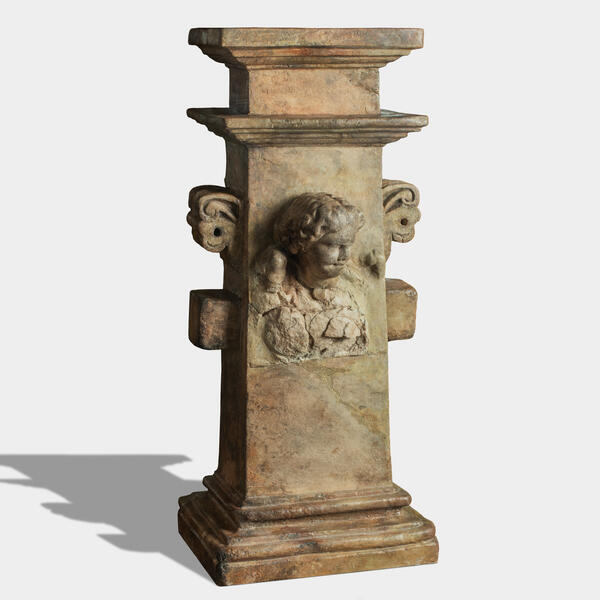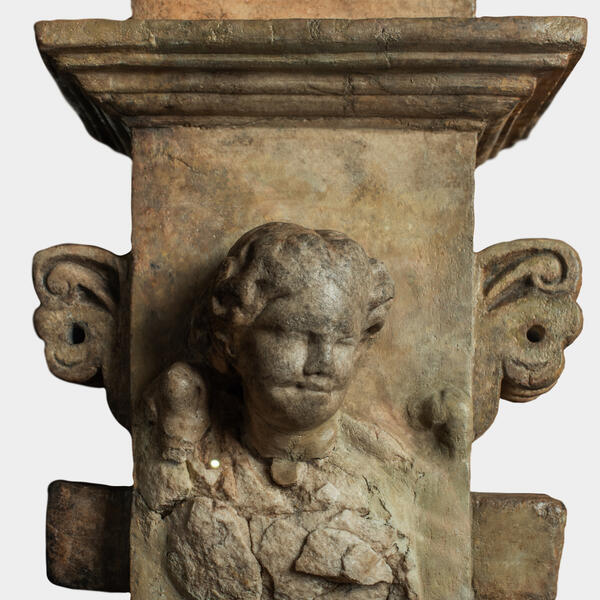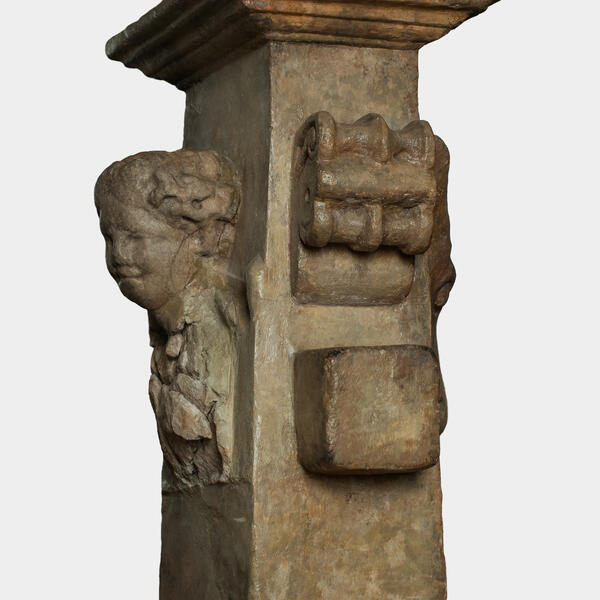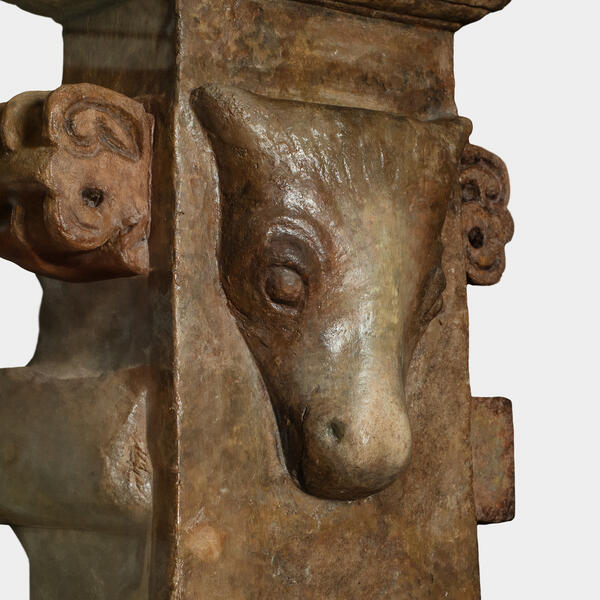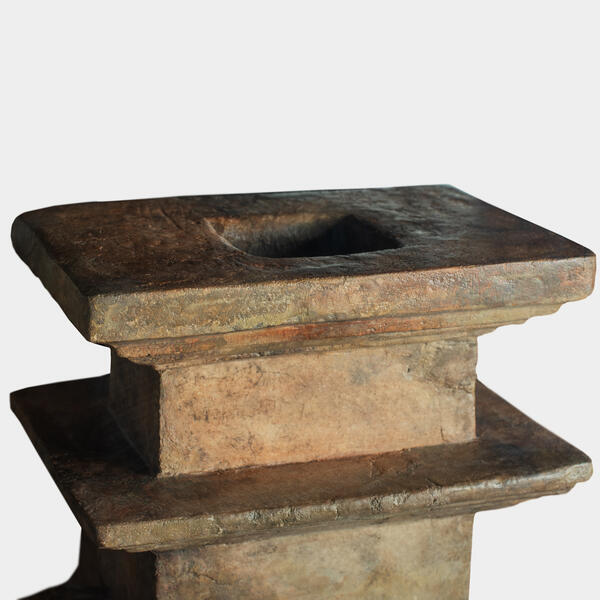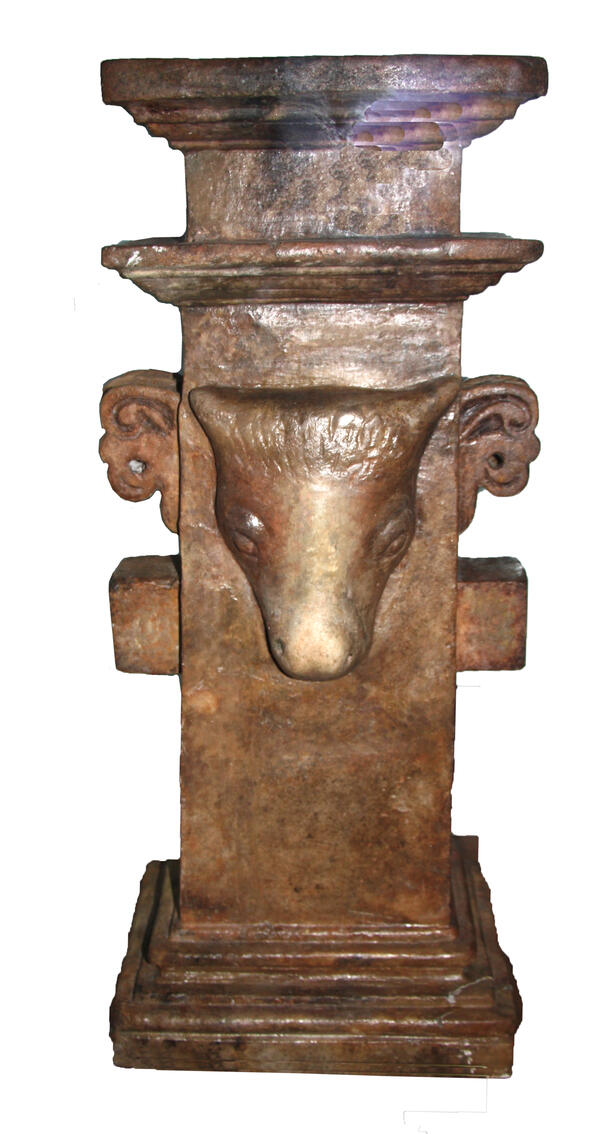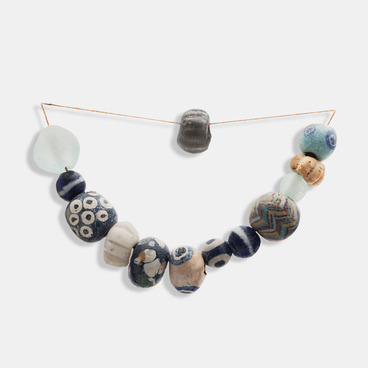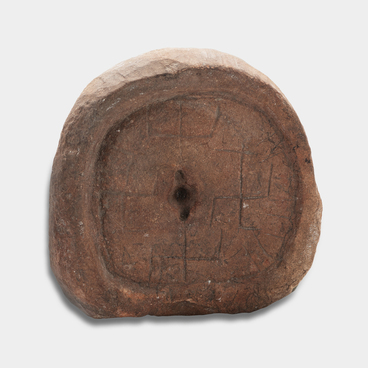The exhibition of the Tanais Archaeological Museum-Reserve features an altar that was discovered in a layer of ash — remnants of a fire that took place in the third century CE in eastern Tanais. It was there that the temenos, a sacred site of Tanais residents, was supposedly located. Perhaps, there was a small temple, and during times of danger, local citizens may have decided to move this important sacred object out of harm’s way.
The altar is a high stele, rectangular in cross-section, with a smooth surface. It rests on a base and is topped by a crown. It features various elements of architectural décor. The wide, smooth sides of the altar feature a bucranium (bull’s head) on one side and a chest-length female portrait in high relief on the other. The bull’s head is well preserved, even though the altar fell on paving stones with this side, causing the top layer of marble to peel off in many areas. The bull’s eyes, nostrils, horns, and fur on the forehead are carefully detailed (all of these elements are partially preserved). The female figure, made in higher relief, has been preserved less well, as the image appears somewhat blurred. The shoulders and chest are particularly damaged, with only fragmentary pieces of clothing with deep folds surviving, as well as what appears to be a rounded object or knot on the right shoulder. The head is turned slightly to the left and the face is smiling. All the facial features — the nose, lips, chin, and cheeks — appear soft and plump. The lush hair is parted down the middle and appears to be tied back with a band. On either side of the stele, at the level of the female head, there are symmetrical protrusions that resemble a volute or a beak of a large bird such as an eagle or griffin.
